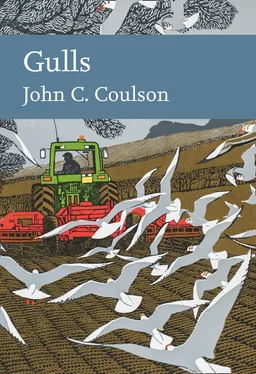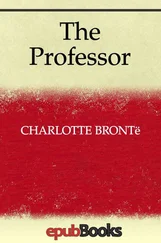CURRENT GEOGRAPHICAL RANGES
Gulls breed on all continents, with Kelp Gulls extending their southern range into Antarctica and several gull species breeding in the High Arctic. The number of gull species breeding in each 10-degree zone of latitude varies considerably, with two peaks of abundance, one in each hemisphere ( Fig. 1
). In the northern hemisphere, the number of species peaks between 40°N and 60°N, and in the southern hemisphere, a smaller peak occurs between 20°S and 40°S. Few gull species breed in the tropics, Antarctica or the High Arctic regions. This variation in species abundance, particularly between the two hemispheres, correlates reasonably closely with the amount of land within each latitude zone. This may offer a partial explanation as to why appreciably fewer species of gulls are found and breed in the southern hemisphere.
Few individual gull species breed over a wide range, with about 80 per cent spread over less than 20 degrees of latitude, and very few breed in both hemispheres. These patterns differ markedly from the terns, where many species breed in both the northern and southern hemispheres. A comparison of the ratio of gull and tern species breeding in different latitude zones throughout the world is shown in Fig. 2
. There are more gull than tern species in only the zones north of 40°N, which begs the question as to why fewer gull species occur in the other zones. Could this be the result of competition between gulls on the one hand, and with petrels and shearwaters in the southern hemisphere?

FIG 1. The number of gull species (upper graph) and tern species (lower graph) breeding throughout the world in each zone of 10-degrees latitude. The distribution of gull species is clearly bimodal, while that for tern species peaks in the tropical zone between 30°N and 30°S. Tern data from Cabot & Nisbet (2013).

FIG 2. The ratio of the number of breeding gull species to the number of tern species in relation to zones of latitude. Gull species are more numerous than tern species only north of 40°N. The dashed line indicates equality.
The dominance of gulls over terns in temperate and arctic regions of the northern hemisphere is even greater when numbers of individuals are considered. For example, the average numbers of gulls per species breeding in Britain are very much greater than for terns. Using the figures from the national census in Britain and Ireland in 2000, there was a total of 1,810,000 breeding gulls (of seven species), but only 176,000 breeding terns (of five species), indicating a ratio of 10 gulls for every tern. Each gull species was represented by an average of seven times the average numbers for each tern species. Similar large differences are evident elsewhere in Europe and in North America.
The numerical dominance of gull species in the northern hemisphere suggests that much of their speciation occurred there. However, species of the genera Larus, Leucophaeus and Chroicocephalus breed in both the northern and southern hemispheres, indicating that in the past at least one species belonging to each genus must have spread, as breeding birds, across the equator on at least one occasion.
GULL HABITATS
The majority of gull species frequent coastal areas, marshes, rivers, estuaries and large inland lakes. Many occupy the same habitat zones used by marsh and sea terns, and in this respect they contrast markedly with shearwaters and petrels, which are pelagic. The smaller species often feed and breed inland, while the larger gulls breed mainly at coastal sites. Within the last hundred years, several species of large gulls have bred inland more frequently, a change in behaviour that has coincided with their overall increase in abundance.
Gulls breeding on the coast move only moderate distances from the shore. They are tied by relatively short incubation shifts and the need to feed their young frequently and regularly. In general, the density of gulls at sea tends to decline rapidly as the distance from shore increases, although the Kittiwake does not show this tendency in winter. Outside the breeding season, most gulls remain within daily flying distance of the shore, preferring to roost overnight on land or on sheltered coastal waters. The exception to this is when they are migrating. Only the two kittiwake species, Sabine’s Gull and Ross’s Gull, occur regularly in oceanic waters far from land throughout the long non-breeding season.
GULL SPECIES RECORDED IN BRITAIN AND IRELAND
The box is the current list of 26 species recorded in Britain and Ireland as breeding species, regular visitors or occasional vagrants. The list represents about half of all gull species in the world. Kumlien’s Gull is listed, but is retained as a subspecies of the Iceland Gull.
An approximate phylogenetic tree of the evolution of gull species recorded in Britain and Ireland (mainly based on the research by Pons and colleagues) is shown in Fig. 3
and involves eight genera. Such a representation can be only approximate, as their evolution has most likely been multi-dimensional and so cannot be presented accurately in two dimensions. There is still considerable uncertainty about the relationships between the species in the genus Larus, and no attempt is made in the order shown in Fig. 3
to indicate these, other than to suggest that the species with totally white wing-tips probably represent a distinct group.
Audouin’s Gull, which lacks a black head at any time, is placed in the same genus (Ichthyaetus) as two black-headed species on the British list (Mediterranean Gull and Great Black-headed Gull), along with three other black-headed species that occur elsewhere in the world, so its inclusion is surprising. Similarly, the Slender-billed Gull, which has a white head in all seasons, is included with the dark-headed Black-headed and Bonaparte’s gulls. However, Jean-Marc Pons in response to my query believes that ‘the dark hood is not a good character to construct evolutionary relationships because it has repeatedly been lost during the evolution of gulls’. In addition, he confirms that there is additional evidence indicating that the Black-headed and Bonaparte’s gulls should be included in the genera Ichthyaetus and Chroicocephalus, respectively.
The national censuses of gulls and other seabirds have been incredibly important and informative, and at last we have a sound knowledge of both the distribution and numbers of adults. However, we do not have a census value for numbers of immature individuals that have never bred for any of the gull species. Since immature birds may include up to five year classes (varying according to species), the numbers involved are appreciable and can be estimated only from a life table formed from survival rates obtained from detailed marking studies. Table 1
gives rough estimates of the proportion of immature gulls of the six commonest species occurring in Britain and Ireland. The figures are approximations but indicate that, by autumn, there is a large proportion (probably about 40 per cent) of individuals of every species listed that have not yet matured and bred. The proportions of immature individuals will have decreased by early spring because the mortality rate of young birds in their first year of life is usually markedly higher than that of adults, but they will still form an appreciable minority of the numbers of each species.
Gulls recorded in Britain and Ireland
Читать дальше














